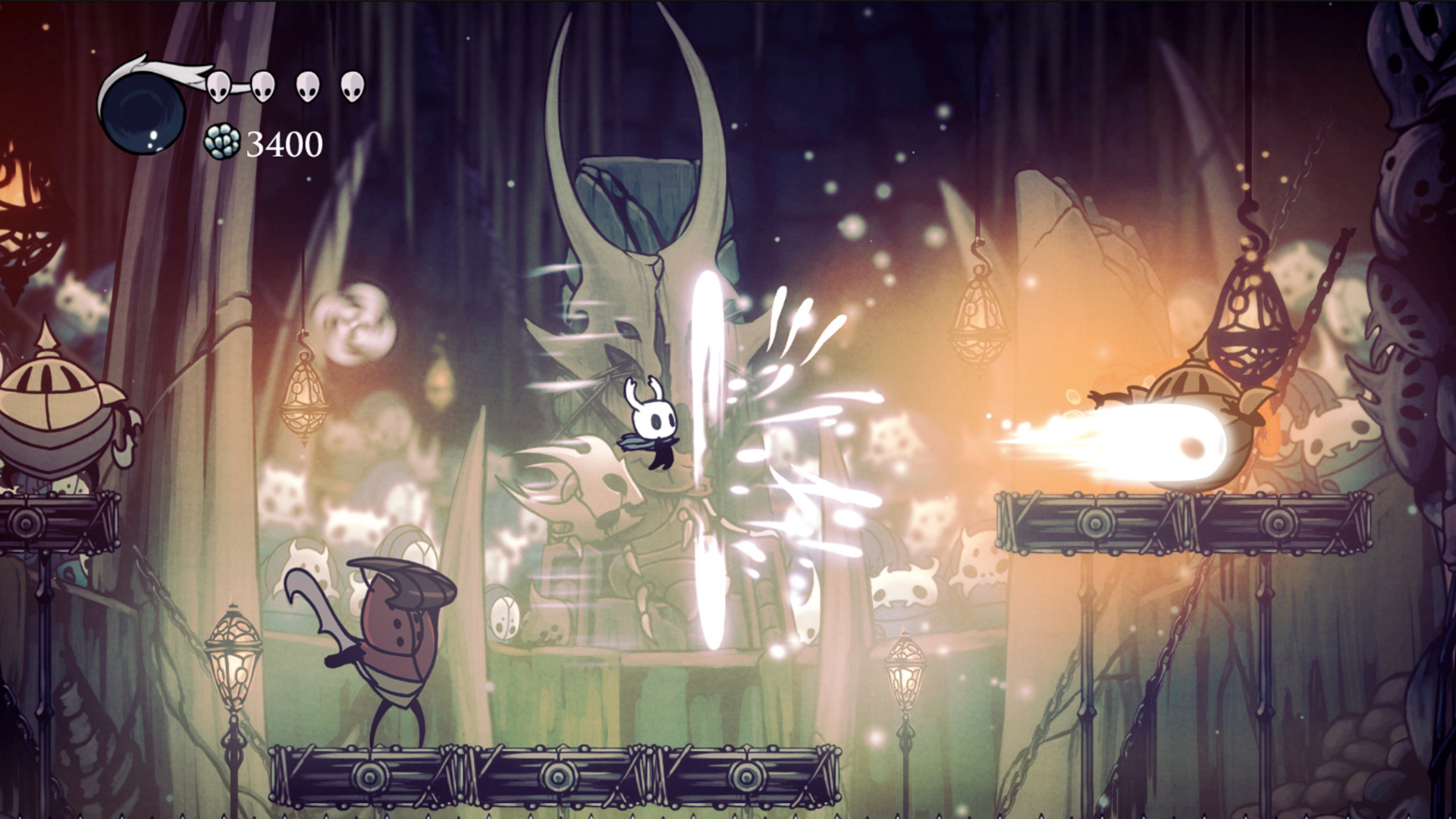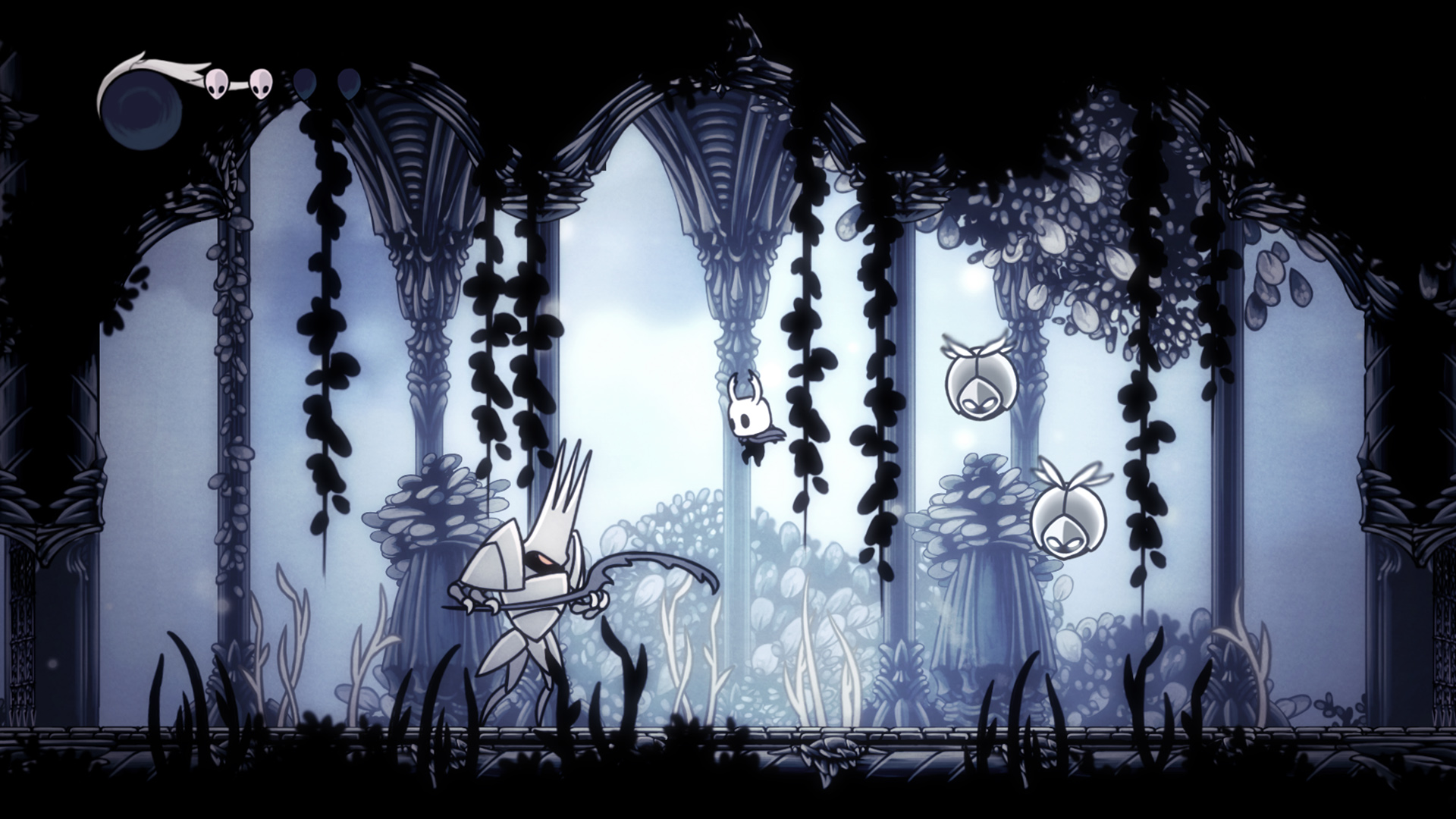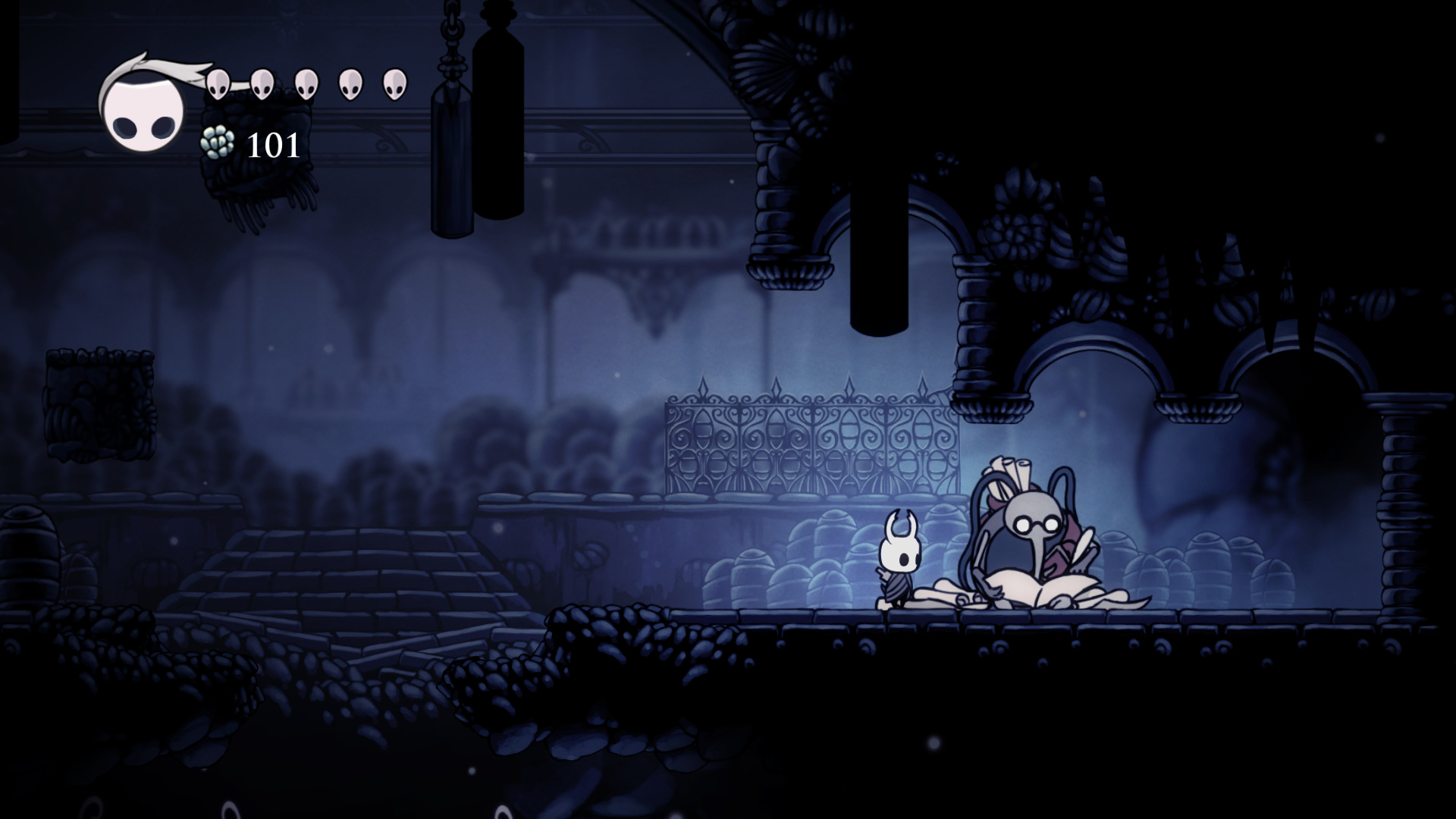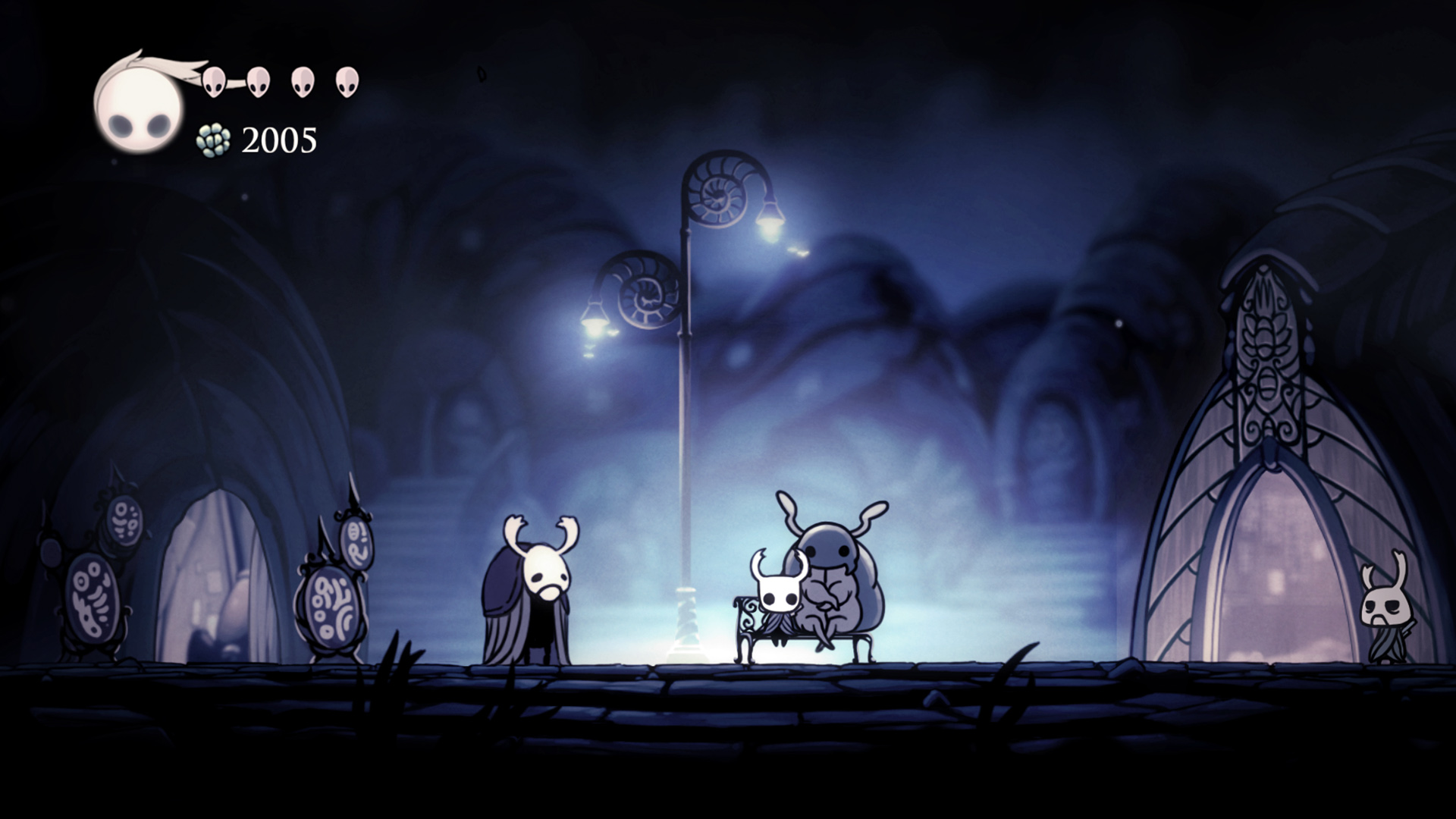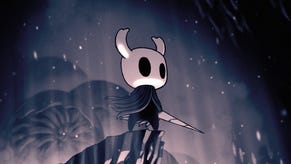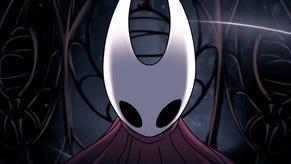Hollow Knight and the art of consistency
How to build a world where anything can happen
"One of my favourite things in the whole game is that when you slash your little weapon against the cave wall you actually get an impact, with a little recoil and rocks come out,” says Ari Gibson, animator, artist and co-creator of Hollow Knight. “It’s such a small thing, but it changes you from being just a few animations to being a present actor inside this world.”
That little hit is a perfect illustration of how Hollow Knight’s epic chitin-on-chitin adventure is built on multitudes of small details, all driven by something that developer Team Cherry say is not only the fundamental tenet behind Hollow Knight but also every other game they’ll ever make: consistency.
Warning: minor spoilers for locations and items in Hollow Knight follow.
Consistency. Such a boring word; simple, even. But in simplicity lies richness. Every little detail led to new ideas, pushing out ever wider the world they were creating.
An example: when, very early in development, other co-creator William Pellen started thinking about what would happen when your silent little bug took damage, he went first for the standard flash of red. But Gibson pointed out that it’d look odd in the largely monochrome world they were creating. So they decided to have the insect flash black instead. Then they discussed what it’d look like when it was low on health, and they decided to have it leak blackness.
At the same time, they’d come up with Hollow Knight’s death mechanic, that when you die you leave behind a ghost. “Then, as this blackness started to link to the character, the ghost became black and we started to call it a shade,” Pellen tells me. And that idea, that death would leave behind a shade, something malevolent, and that the insect bled darkness, naturally became a deep part of Hollow Knight’s lore. “But the origin wasn’t lore, but trying to make elements work together consistently,” says Pellen.
Sometimes it worked the other way around. One area is called the City of Tears because it sounded good, and the name led to the idea that it constantly rains there, even though it’s deep underground, and then that led Team Cherry to thinking about where the rain came from. Above the City of Tears area was a gap, and so it made sense to put a lake there.
“Half the game is built from that base, an evolution of what the world is telling us, of us travelling down paths and finding out what’s there and what you’d expect to be there,” says Gibson. “That happened with probably all the things in the world, once we had to give them context.”
There’s the item which allows you to wall-jump. Because it’s located in a village of mantises, they called it the Mantis Claw. And if it was one of their claws, surely they’d also be able to jump? The item ended up directly informing the key dynamic of the enemies in the area. And there’s a powerup that allows your character to swim through acid, which was called Acid Armour until Team Cherry started to talk about what it actually was. A plant? A seed? A fruit. The area deep in the sewers where Isma’s Tear is found became leafy to match, and its source a character who became part of the history of the world.
Working in this freeform, almost improvisational way sounds haphazard and, frankly, scary. If one idea always led to another, and then to another, how would it ever feel completed?
But Team Cherry was able to stop Hollow Knight from spiralling out of control because Gibson and Pellen worked on it largely in isolation, only bringing in the game’s two other two principals, technical director Dave Kazi and sound designer and composer Chris Larkin, later on.
Not that any pair can work like this. But Gibson and Pellen’s creative relationship was forged in the rigours of game jams. Gibson, an animator for films, and Pellen, a web designer, originally met each other through mutual friends some 15 years ago, but reconnected in 2013 after Pellen started making small platformers and Gibson suggested they try entering the 27th Ludum Dare. Its theme was 10 Seconds, and Team Cherry came up with Hungry Knight, which starred the same insect you play in Hollow Knight.
“Game jams are probably a great base to test a creative relationship,” says Gibson. “It can be very difficult to find people who match your sensibilities and work together in stressful situations."
“You see how much you can shoot ideas back and forth very rapidly, and wherever you can trust each other to work through an idea and come back with a similar thing,” says Pellen.
“And that you’re capable of finishing an idea, pulling all the parts into a form that’s palatable to others. That last thing is probably a stumbling block for a lot of people.”
A year after their first Ludum Dare, they started to make Hollow Knight, following a plan that did a great deal to ensure that they’d be able to finish it. The first step was polishing the player-insect’s moveset to a high level, so they knew it’d feel great and would be able to design spaces for it.
And then they built the entirety of Forgotten Crossroads, the first area of the game. They packed it with an upgrade to find, enemies, minibosses and a big boss, essentially finishing it before they made any other bit of the game.
The idea was that Forgotten Crossroads would serve as the template or quality bar they wanted every other area to hit. “It set in stone our expectation,” says Gibson. They’d know another area was done when it reached the same bar. Sure, they got better at making the game as they made subsequent areas. Later bosses became more complex as Team Cherry learned how to design them, but that fit with the fact that the player would be encountering them later in their run, and Gibson admits that players often find later areas more engaging, simply because they’re more refined.
But they never felt they had to overhaul Forgotten Crossroads. They simply knew that if a new area met its standards, it was good. Besides, they threw a lot into it. “You have to be careful with this stuff!” says Gibson. “We put three minibosses in the first area and it set us on a path where we had to create an enormous amount of them. And we did! And it was probably a good thing because it pushed us further.”
The same went with the decision to add layers of parallax scrolling to backgrounds, giving areas a great sense of depth. “It felt really quick to do, but what might seem quick in one instance can reveal itself not to be quick when you have to make an entire world,” says Gibson. “It ended up adding months of work, just maintaining that same level throughout the game.” Luckily, the decision to make the art simple for enemies and NPCs, which meant Gibson could create several in a single day, helped to make up for that kind of inflation.
The final six months were a matter of constantly playing the game. Gibson or Pellen would play on the sofa, shouting bugs and other concerns back to the other, who’d fix on the fly. At this point, the concept of consistency took a subtle shift, broadening out to thinking about the entire game rather than comparison with Forgotten Crossroads. “So the player can go to the world and feel completely enveloped in it, so nothing ever jars or stands out as being out of place,” says Gibson.
It was a period of small tweaks which could mean adding a little vista where it felt right, or a secret in a corner that they ran into. If there was a quiet period during which meeting an NPC would fill it out, they’d consider adding one.
But Team Cherry were wary of being too consistent. “There’s a type of consistency that starts to numb people a bit sometimes,” says Pellen. “If you’re familiar with games you can tell when you’re about to hit a save point or a boss. You can say it’s designed well, timed in a consistent way so they know when to show something impressive, when you’ll need a save point and nothing is obtuse. That’s when you can disengage a little sometimes.”
They didn’t want to make a game so much as a world in which players are free to explore and feel that anything can happen, where players can wander, lost, for 20 minutes and not find a save bench, and also where if they happen to break a wall they might find an entire two-hour long new area behind it. “It’s breaking that feeling of feeling artificial,” says Gibson.
“It’s the flip side of consistency, which is when you start to feel the fingers of the person making it,” says Pellen.
Remarkably, no one outside the studio played the game during that six months. The idea of playing a game over and over again for six months sounds utterly maddening, but Pellen insists that the pleasure in adding the one little tweak that completed a room made up for it.
If there’s a good illustration of the consistency they achieved in Hollow Knight, it’s in what Gibson feels is their one critical mistake. Last August they released the Hidden Dreams DLC, which added two new bosses. “But with one of them we didn’t put any additional narrative around it,” says Gibson. When you killed it, the world didn’t change. No NPC acknowledged it, and the player simply got a payout of Geo, the in-game currency.
“It was inconsistent with what we’d done everywhere else in the game and it really stood out,” says Gibson. What’s more, they’d designed the boss so it got harder every time the player failed to kill it, a suggestion of some kind of extra internal life, a story there to be uncovered. “People recognised it, that they’d defeat this character and all they’d get was some currency, which is not what interests people. It’s clearly not as engaging as story. They felt angry.”
Team Cherry patched in some story, having learned a lesson the rest of the game already reflected: that worlds are delivered by consistency. “It was ’here is a boss, defeat the boss, get some currency’. But that’s not a world, it’s creating a mechanical system.”
Gods & Glory is due out this month, the last of Hollow Knight’s free Kickstarter stretch goal expansions, but while there’s still more to come, Pellen and Gibson are starting to think about how their ideas relate to worlds outside Hallownest. “Beyond Hollow Knight, the consistency notion is about us as Team Cherry,” says Pellen. “What we look forward to a lot, although it’s probably a little way off, is having other games that are not Hollow Knight.”
Gibson agrees. “It’s only when we have multiple worlds for people to explore that they can start seeing more clearly our creative vision, what we value in games, in pace and world and challenge.”



